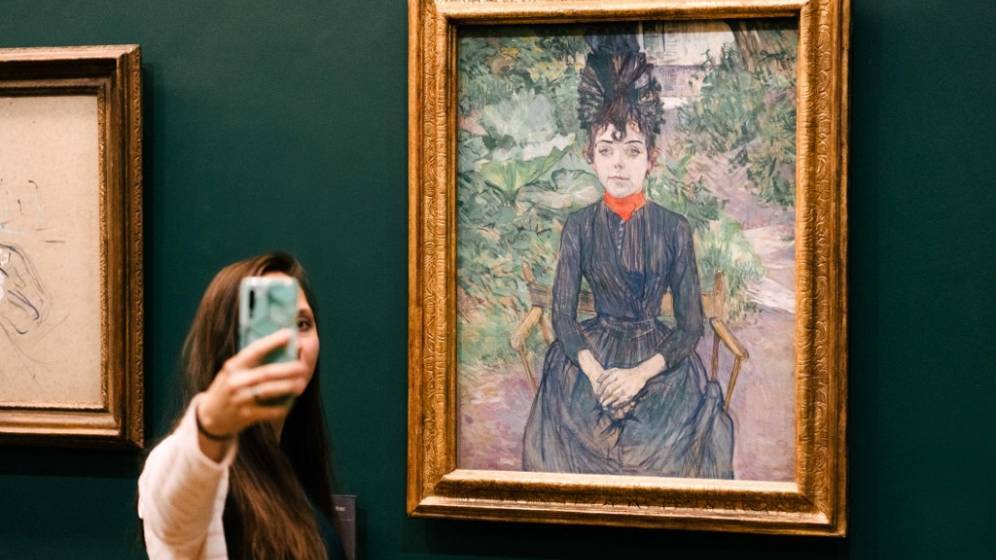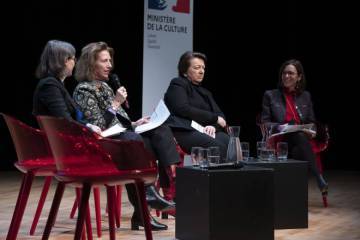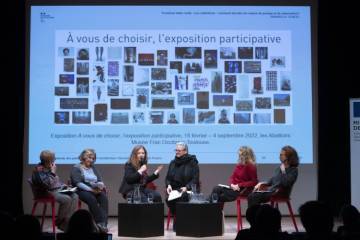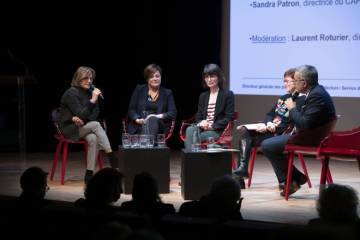On the occasion of the 20 years of the law of 4 January 2022 on museums in France, a day of study held on December 12 at the Musée d'Orsay, made it possible to take stock of these two decades but also to consider the “museum of tomorrow” from the point of view of public acceptance, the promotion and sharing of collections and the scientific and cultural project of institutions.
Collections facing new challenges of sharing and valorization
The Law of 4 January 2002 was born out of a need for change since, until then, museums were governed by a provisional ordinance dating from 1945, a robust text but which showed some shortcomings, recalls Francine Mariani-Ducray, director of museums in France from 2001 to 2008. For example, it did not propose the protection of the word “museum”, only dealt with the museums of the Fine Arts and thus touched on the limits of what could be included as museums of science and technology or natural history. We had to find a common system for all museums and only the law could build it. This law was made to be understandable by all the interlocutors, appropriable by the authorities and focusing on the name museums of France, the definition of museums and their missions and the need to design and implement educational actions ».
The law passed was based on four axes. The first is that of the preservation and enrichment of collections, including the introduction of a ten-year inventory of works. It is linked to the second axis, that of museum buildings, which protect, showcase and present these collections to the public. “ The mobilization was very strong to renovate many museums in France because they serve as a lever of attractiveness of the territory », continues Marie-Christine Labourdette, director of museums in France from 2008 to 2018.
It has set up regional scientific commissions to which museums in France must turn in the event of a project of acquisition or restoration. The DRAC are the organizers of these commissions. “ They are places of sharing and collegiality between professionals since we have in these commissions about fifteen experts in all fields that represent all the diversity of museums in France, continues Brigitte Liabeuf, advisor for museums at the DRAC Auvergne-Rhône-Alpes. They provide a fairly comprehensive overview of the situation of museums in the regions. » These commissions have evolved, particularly in terms of restoration, to allow more time for more complex files or to accompany professionals. A framing from which the national costume centre (CNCS) opened in 2006 in Moulins. ' Our acquisitions are in the realm of entertainment and we are one of the only institutions to retain this type of element. So we have a lot of proposals for donations and we arrive in committee with a complex set that we try to limit to 30 or 40 costumes, which is still 150 elements ” said Delphine Pinasa, Director.
This law also enabled the establishment of a network of professionals and cooperation between institutions. “ In times of covid, the issue of this human dimension has become central, recalls Anne-Solène Rolland, head of the French museum service from 2019 to 2022. The law has made it possible to dialogue in a structured network and among peers to share our problems and solutions. » In Saint-Germain-en-Laye, the National Archaeological Museum has a known treasure since 1893 consisting of 325 coins and 74 ingots, some of which had been scattered on the market. “ The equivalent of 70 currencies were identified and we were able to co-acquire with the Aquitaine Museum (in Bordeaux editor’s note) 25 additional currencies for us and 11 for them. This resulted in cross-programming and allowed us to reintroduce different currency types that were not previously identified and strengthen our collections », explains Rose-Marie Mousseaux, director of the museum and the national domain
For a better dissemination of the works, the Slaughterhouses of Toulouse, both museum and FRAC (regional contemporary art fund), has chosen to make a participatory exhibition with the public on the occasion of the museum’s 20th anniversary. “ This has forced us to question our relationship to collections and how we share them with the public ” explains Annabelle Ténèze, Director of Abattoirs. An iconic selection was made and validated by an internal vote. It combines recent and old acquisitions representative of all mediums. « Thanks to her, we were able to make an act of pedagogy because often we show our collections without explaining where they come from and how they arrived here », continues Annabelle Ténèze.
On the Nice side, the national sports museum, the only one in France dedicated to this theme, is preparing for the Olympic Games in Paris 2024. With a view to this event, the institution will make its rich collection of 45,000 objects available to museums in the Paris region. « We are working today with about 40 structures and we would like to expand this network with the department, the DRAC but also the Games Organizing Committee », predicts Marie Grasse, the museum’s director general, who also a large collection of sports archives to enhance this heritage.
A new relationship to build between museums and their audiences
The third strong thrust of the Museums Act is to work on the reception of audiences, including the issue of free places, finally granted in the majority of museums in France to the under-18s. « This decision was important because it allowed young people to go to these places ” said Marie-Christine Labourdette. “ musée d'Orsay has made affordability one of its main issues. “ We made the choice for example to lower the price of our Thursday night, which went from 14 to 10 euros. We doubled the number of entries », notes Pierre-Emmanuel Lecerf, general administrator of the public establishment of the Musée d'Orsay and the Musée de l'Orangerie - Valéry Giscard d'Estaing. The Département de l'Isère, for its part, has made the choice of gratuity for all in its 11 establishments.
The institutions also fight the battle for public hospitality, with the difficulty of getting the public over the “last mile” that separates it from the entrance to a museum. The Department of Isère, is asking the question of the establishment of museums in the territory. « We need museums in rural areas for a question of territorial networking ” notes Aymeric Perroy, Director of Culture, Heritage and International Cooperation. In Narbonne, the museum Narbo Via builds a patient but lasting bond with the neighbourhood in which it is located. “ Hospitality begins inside and continues outside, summarises Anne Lamalle, Director of the Mediation and Communication Division. This work makes it possible to offer a successful museum experience that repeats itself.” The establishment is also in co-construction with associations of a visit program for people with disabilities to capture this audience far from the museum world.
Young people are one of the specific audiences important to museums and they multiply initiatives to establish a lasting relationship with them. The National Museum of Natural History has set up virtual reality tours to create a new visiting experience while the Musée d'Orsay works on two age groups: 0-6 year olds, not very present in the exhibitions, and the more than 26 years that come out of the free.
Museums also want to meet the expectations of visitors, especially on the ecological transition. “ We need to ask how these issues are being introduced into museums », says Bruno Girveau, Director of palace of fine arts and the Countess Hospice Museum in Lille. With finally militant exhibitions, for example on the representation of the living or, as in the national museum of natural history, podcasts or books. « We are wondering how to go to society to talk about biodiversity, our commitment and how to develop what science can tell us about these topics ” said Agnès Parent, Director of Audiences.
A scientific and cultural project to rethink?
Finally, the last axis concerns the scientific and cultural project (CSP) , a mandatory operational and policy document since the 2016 CASL Act that defines the identity and direction of a museum. Institutions have taken over this CSP, such as the army museum who decided to make it ' a collective structuring experience Ariane James-Sarazin, Deputy Director, sums it up. Ten working groups have been established to develop strategic axes and to make teams ambassadors of these axes. “ The CSP must be seen as a logbook, a tool always open and collective. »
The same method was applied to museum of confluences Lyon, recently opened in 2014. The entire team worked on three themes: the responsible museum, respect for the public and international outreach. The work of the groups fed into the CSP, which was finally adopted in 2020. “ It enabled us to set a course, an ambition, a strategy and a governance on a daily basis ” sums up Hélène Lafont-Couturier, the director.
At Museum of Fine Arts of Brest, the CSP went even further by appealing to residents. “ During our reflection, the question of methodology emerged, explains Sophie Lessard, the director. The museum suffers from low awareness at the local level so we decided to consult with the public to think about its future. » This collaboration took place at neighbourhood advisory councils. The PSC, drafted following the residents' return, has been validated and will make it possible to initiate a program of rehabilitation and extension of the premises.
The CAPC-Musée d'art contemporain de Bordeaux voted in January after two years of work. “ This document has answered many of our problems and to work with members of our team and therefore to resolve the links ” recalls Director Sandra Patron.
Partager la page



